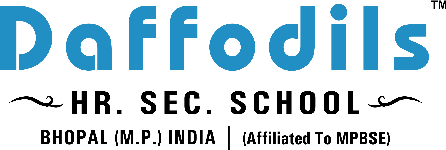TEACHING STRATEGIES OF OUR SCHOOL AND METHODOLOGIES
The Daffodils Higher Secondary Schools is emphatic about providing child-centric education, and keeping this in mind, we offer learning that is both interactive and experiential. The teaching methodology is a diverse mix of the most recent innovations in education and is based on the latest findings in tutoring research.
We realize that a single method cannot suit everyone. Our teachers select the best combination of various approaches according to the learning styles and needs of their students.
Our Teachers act as facilitators and guide the students in their learning using activities, audio-visual stimuli, projects and presentations. The focus remains on creating awareness in the students and providing them with hands-on learning experiences that they can apply to real-life situations.
We rely on some teaching theories. It can be organized into four categories based on two major parameters: A Teacher-Centered Approach versus a Student-Centered Approach, and High-Tech material use versus Low-Tech material use.
Teacher-Centered Approach to Learning: Teachers are the main authority figure in a teacher-centered instruction model. Students are viewed as “empty vessels” who passively receive knowledge from their teachers through lectures and direct instruction, with an end goal of positive results from testing and assessment. In this style, teaching and assessment are viewed as two separate entities; student learning is measured through objectively scored tests and assessments.
Student-Centered Approach to Learning: While teachers are still an authority figure in a student-centered teaching model, teachers and students play an equally active role in the learning process.
The teacher’s primary role is to coach and facilitate student learning and overall comprehension of material, and to measure student learning through both formal and informal forms of assessment, like group projects, student portfolios, and class participation. In the student-centered classroom, teaching and assessment are connected because student learning is continuously measured during teacher instruction.
High Tech Approach to Learning:
Advancements in technology have propelled the education sector in the last few decades. As the name suggests, the high tech approach to learning utilizes different technology to aid students in their classroom learning. Many educators use computers and tablets in the classroom, and others may use the internet to assign homework. The internet is also beneficial in a classroom setting as it provides unlimited resources. Teachers may also use the internet in order to connect their students with people from around the world.
Low Tech Approach to Learning:
While technology undoubtedly has changed education, many educators opt to use a more traditional, low tech approach to learning. Some learning styles require a physical presence and interaction between the educator and the student. Additionally, some research has shown that low-tech classrooms may boost learning. For example, students who take handwritten notes have better recall than students who take typed notes. Another downside of technology in the classroom may be that students exposed to spell check and autocorrect features at an earlier age may be weaker in spelling and writing skills. Ultimately, tailoring the learning experience to different types of learners is incredibly important, and sometimes students work better with a low-tech approach.


